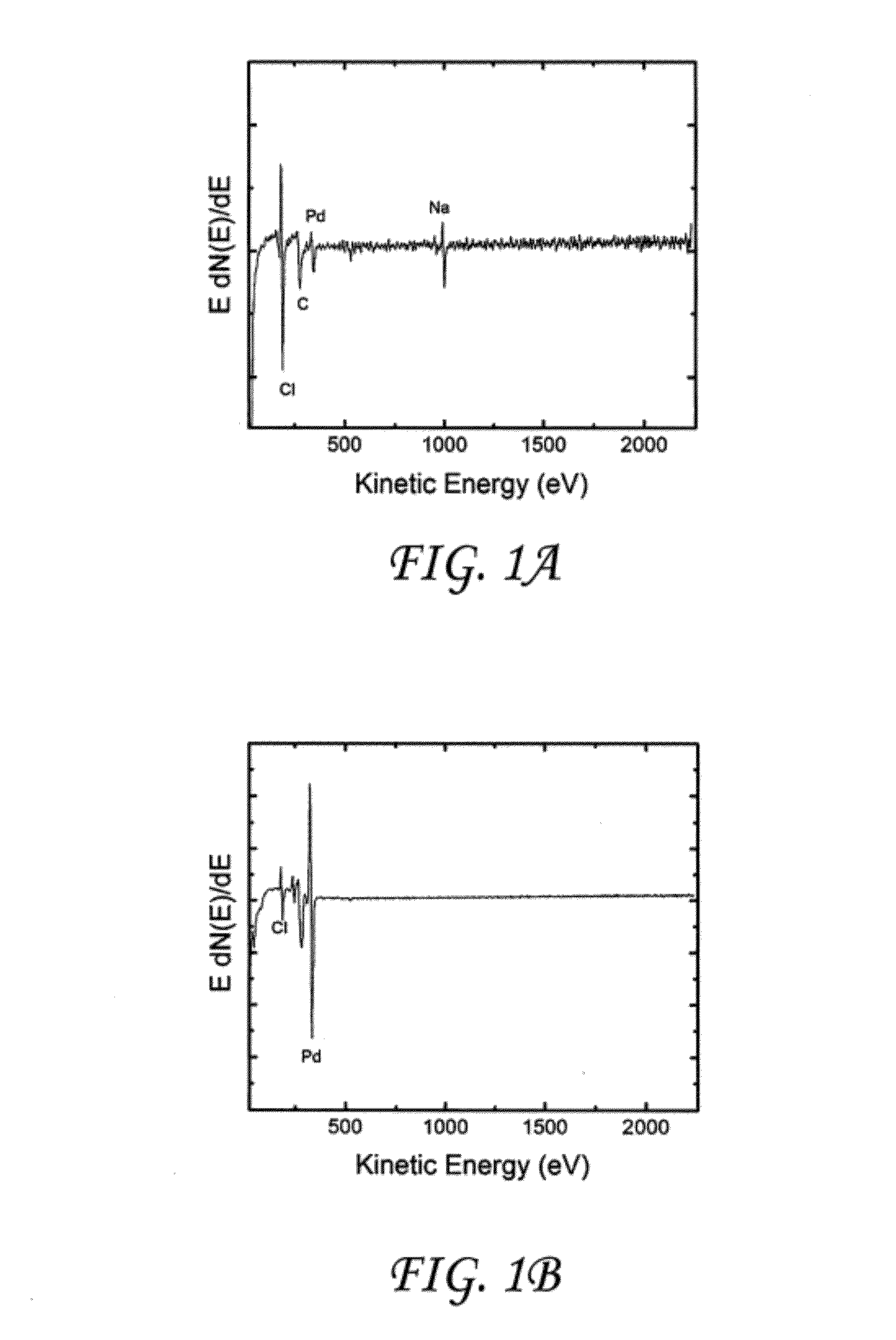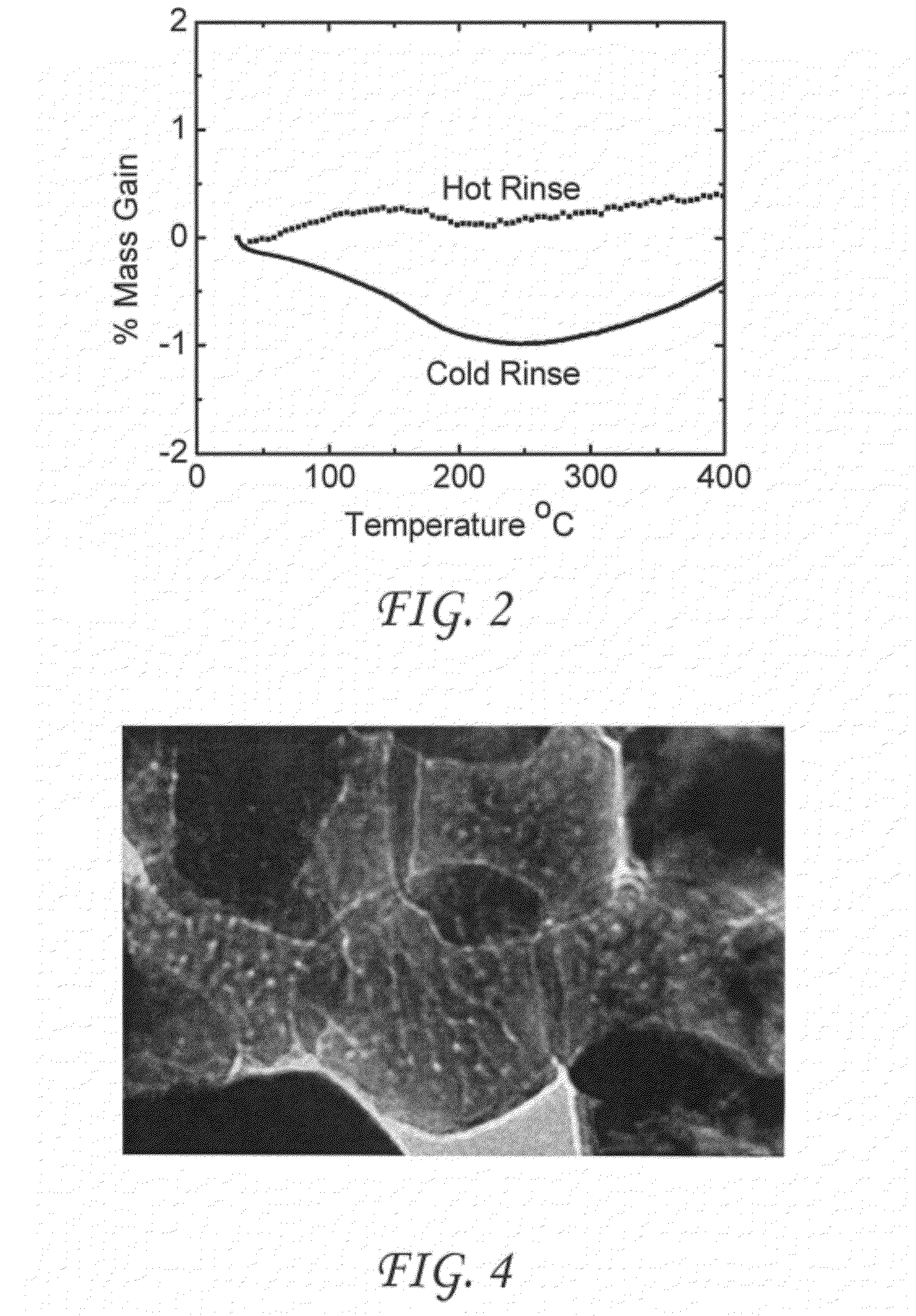Bulk Synthesis of Nanoporous Palladium and Platinum Powders
a nanoporous palladium and platinum powder technology, applied in the field of bulk synthesis of nanoporous palladium and platinum powder, can solve the problems of limiting performance and limiting the formation of bubbles that can compromise mechanical properties
- Summary
- Abstract
- Description
- Claims
- Application Information
AI Technical Summary
Benefits of technology
Problems solved by technology
Method used
Image
Examples
Embodiment Construction
[0022]We describe herein a method to provide nanoporous palladium and platinum which avoids the shortcomings of the prior art.
[0023]Materials: Palladium black, ammonium tetrachloropalladate, ammonium tetrachloroplatinate, and palladium(II) chloride were purchased from Alfa (Alfa. Aesar, Ward Hill, Mass.). BRIJ® 56 (a polyethylene glycol hexadecyl ether surfactant, e.g., C16H33(OCH2CH2)nOH, where n is about 10), sodium chloride, ammonium chloride, ascorbic acid; hydrochloric acid, and ammonium hydroxide were all purchased from Aldrich (Sigma-Aldrich Co., St. Louis, Mo.). All materials were used as received and 18 MΩ deionized water was prepared in the laboratory.
[0024]Metal salt pastes: 17.7 mg of palladium(II) chloride (0.1 millimole) and 47.0 mg of sodium chloride (0.8 millimole) were added to 0.4 mL of deionized water and heated to 80° C. in a water bath. All solids dissolved, forming a brown solution. Alternatively, 28.4 mg of ammonium tetrachloropalladate was dissolved in the sa...
PUM
| Property | Measurement | Unit |
|---|---|---|
| particle diameters | aaaaa | aaaaa |
| particle diameters | aaaaa | aaaaa |
| particle size | aaaaa | aaaaa |
Abstract
Description
Claims
Application Information
 Login to View More
Login to View More - R&D
- Intellectual Property
- Life Sciences
- Materials
- Tech Scout
- Unparalleled Data Quality
- Higher Quality Content
- 60% Fewer Hallucinations
Browse by: Latest US Patents, China's latest patents, Technical Efficacy Thesaurus, Application Domain, Technology Topic, Popular Technical Reports.
© 2025 PatSnap. All rights reserved.Legal|Privacy policy|Modern Slavery Act Transparency Statement|Sitemap|About US| Contact US: help@patsnap.com



